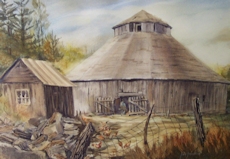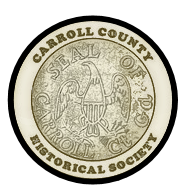Old Villa Rica - Hixtown - Pine Mountain Gold Mine
In 1826 farmers and would be gold miners began to arrive in the area of Hixtown and another little town about a mile south called Chevestown, owned by Allison Cheeves, in hopes of starting a new life and cashing in on the newly found gold in the area. Hixtown was named for William Hix who operated a local tavern and general store.
It was like the wild west in Hixtown at that time, with tales of the Pony Club – the local horse thieving ring and the Slicks who were those imposing ‘vigilante justice’.
At the peak of the Villa Rica Gold Rush, there were said to be as many as 19 commercial gold mining operations. Of the original 19, only the Stockmar Gold Mine/Pine Mountain Gold Mine was commercially mined seriously after 1900.
The Pine Mountain Gold Museum at Stockmar Park was added to the National Register of Historic Places in 2008. You can visit Pine Mountain Museum today to experience how the gold miners worked and panned for gold. The remains of the some original buildings and equipment are on site, along with a stamp mill, grist mill, and panning area.
Wicks Tavern
The city was incorporated as Villa Rica in 1881. The name Villa Rica is derived from Spanish for "rich village" and the city’s name change was done to help promote the gold in the area.
Hixtown and Cheevestown combined to become the new City of Villa Rica. Many of the original structures from Hixtown and Chevestown were physically moved to the new site by rolling them on logs pulled by horses.
Wicks Tavern—c. 1830 is the oldest commercial structure in Carroll County. The tavern was built in Hixtown by New York immigrant John B. Wick. Wick's Tavern was a local gathering place for gold miners working area mines in the early 19th century. The building is a classic example of the “Dutch”-style timber framing method. When the Georgia-Pacific Railroad came through town in 1882 and the homes and businesses were moved, the tavern was considered too large to be moved.
In 1998, the “Friends of Wick’s Tavern” raised the funds necessary and rescued this historic building from being demolished. 100 years later The Wicks Tavern finally got to make its journey to Downtown Villa Rica where it is now a History Museum and the home to the Forrest Escort Sons of Confederate Veterans and the Friends of Wicks Tavern.
Tommy Dorsey Landmark
Thomas Andrew Dorsey Born July 1, 1899 in Villa Rica was known as "the father of black gospel music" and was at one time so closely associated with the field that songs written in the new style were sometimes known as "dorseys." Earlier in his life he was a leading pianist known as Georgia Tom.
His best known composition, "Take My Hand, Precious Lord", was performed by Mahalia Jackson and was a favorite of the Rev. Martin Luther King Jr.. Another composition, "Peace in the Valley", was a hit for Red Foley in 1951 and has been performed by dozens of other artists, including Queen of Gospel Albertina Walker, Elvis Presley and Johnny Cash. Dorsey died in Chicago, aged 93.
In 2002, the Library of Congress honored his album Precious Lord: New Recordings of the Great Songs of Thomas A. Dorsey (1973), by adding it to the United States National Recording Registry.
Fullerville Jail
The building, which county records say dates to 1828, features one window with iron bars and a single opening that is missing a door. The jail originally was constructed of wood, but it burned down when an inmate set it on fire. It is told that he was saved, and the jail was replaced with the concrete structure to stop any other inmate from burning it again. The concrete jail still stands today.
Fullerville—1916-1956—small community northwest of Villa Rica which had several textile mills (notably hosiery). Fullerville was granted a charter in 1916 but returned it to the state in 1956 at the same time allowed the city to be annexed into Villa Rica.
Dorough Round Barn and Farm
The Dorough Round Barn and Farm was added to the National Register of Historic Places on January 20, 1980. Located about three miles southwest of Villa Rica on Hickory Level Rd, the farm consists of a 19th-century farmhouse, several other outbuildings and the famous round barn. Built in 1917, the Round Barn is quite significant architecturally due to its circular shape.
The barn was designed by Floyd Lovell. It had two levels, the upper one smaller than the lower. At the time the barn was added, it was still generally structurally intact. Today, the upper level is now completely gone and the lower level is falling apart as well. The barn is privately owned.









